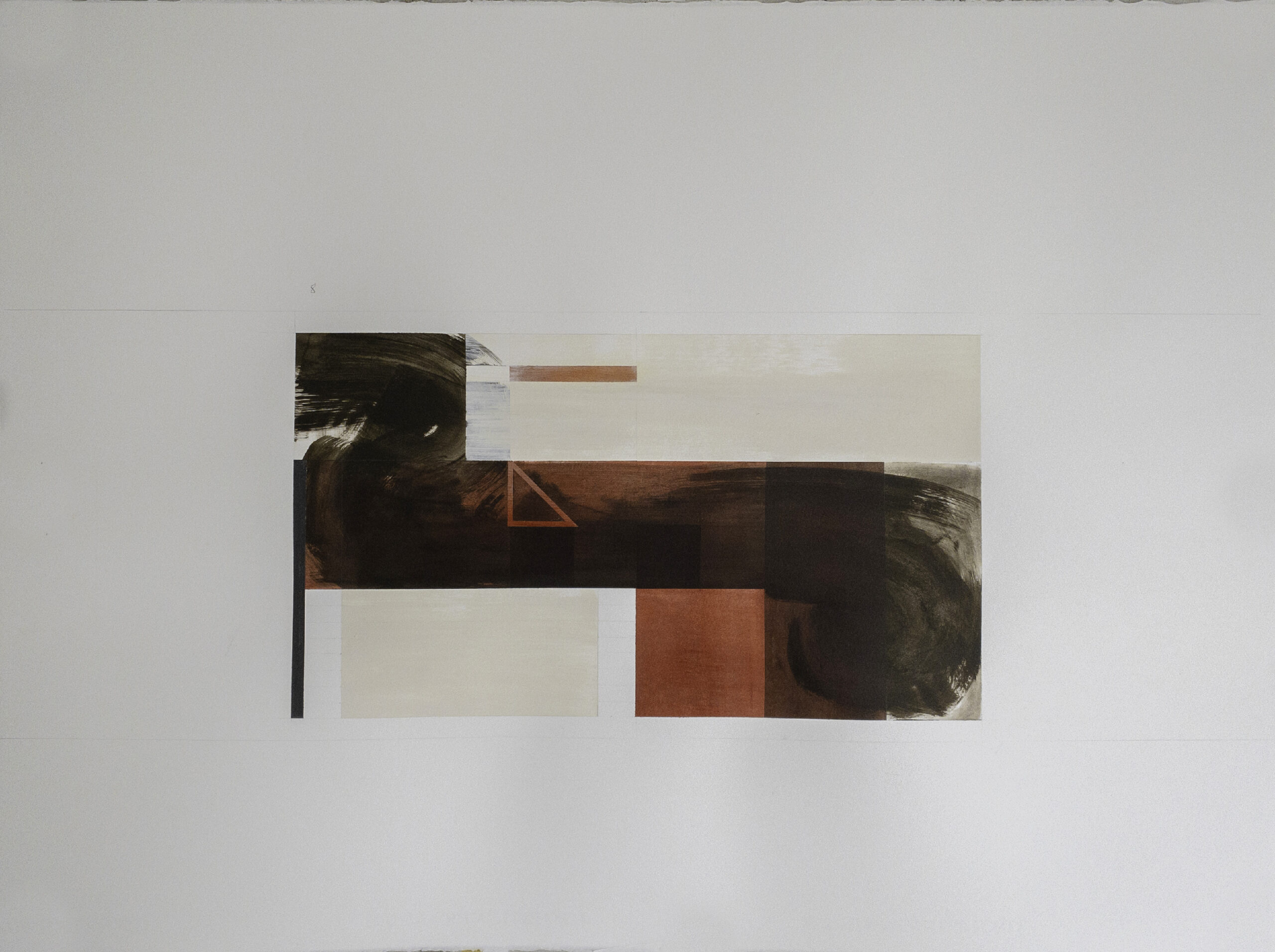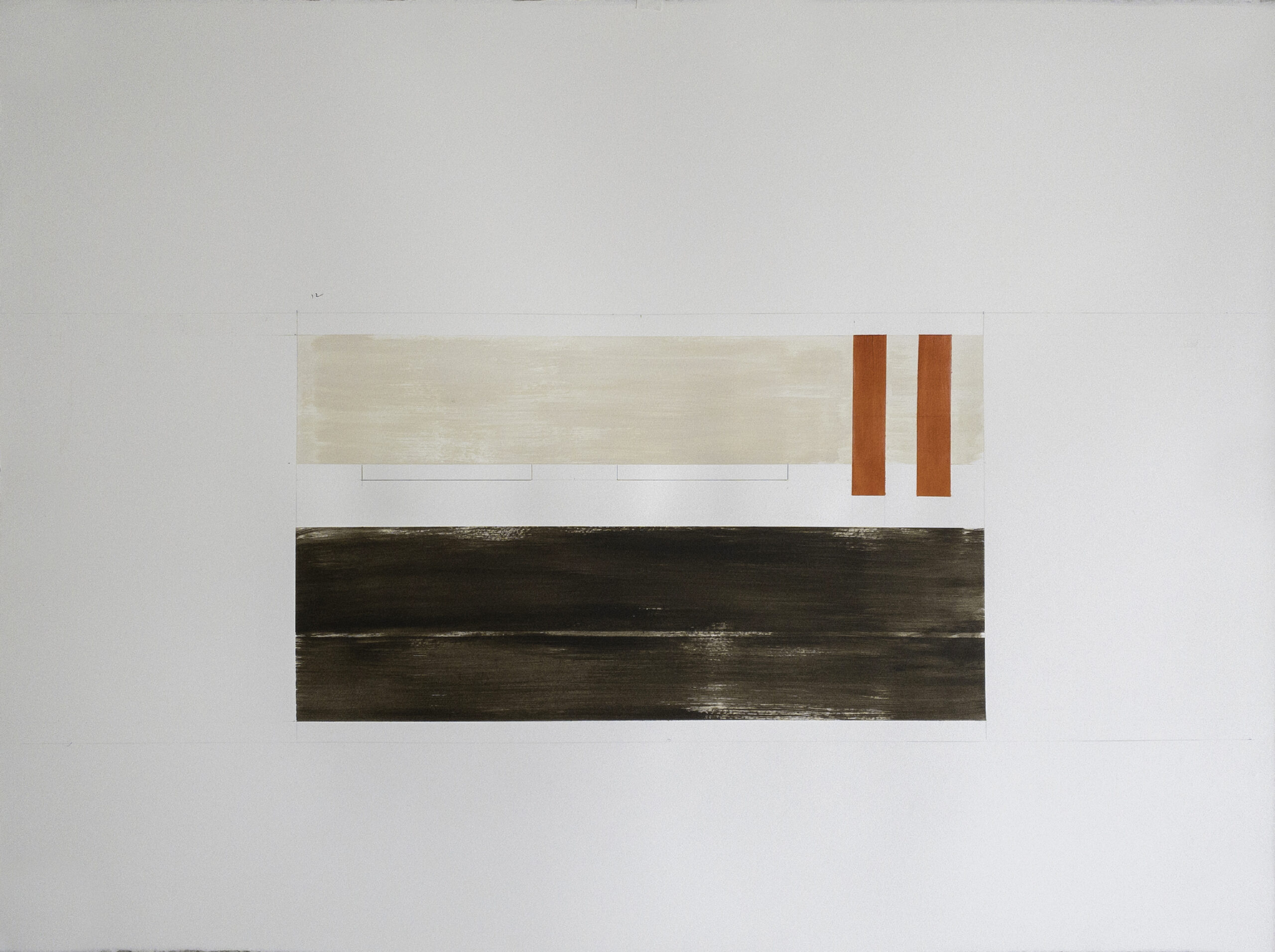 |
| The Mogul Emperor Babur receives the envoys Uzbeg and Rauput in the garden at Agra on the 18th December 1528 | illustration to the Wariat-i-Barbari by Ram Das | c.1590
thanks to @arthistorian18 |
hills of Ch’u – streams of Yüeh
 |
 |
 |
 |
 |
 |
 |
 |
 |
 |
 |
 |
 |
 |
 |
| hills of Ch’u – streams of Yüeh | 15 sheets | each sheet 29 7/8 x 22 1/4 inches
title from a poem by Shen Yüeh [ 441-513 CE ] “On Dawn Excursions, Listening to the Daybreak Swans” | Mather drawings after Dwelling in the Fuchun Mountains | Huang Gongwang | 1348 – 1350 CE |
||
E6
 |
 |
 |
 |
 |
 |
 |
||
| E6 | pencil, paper, acrylic | each sheet 16 1/8 x 12 [ inches ] | ||
| In grand unification theories, E6 appears as a possible gauge group which, after its breaking, gives rise to the SU(3) × SU(2) × U(1) gauge group of the standard model. One way of achieving this is through breaking to SO(10) × U(1). | wikipedia entry | ||
Kizil Caves
 |
| The Kizil Caves (simplified Chinese: 克孜尔千佛洞; traditional Chinese: 克孜爾千佛洞; lit. ‘Kizil Caves of the Thousand Buddhas’; Uighur: قىزىل مىڭ ئۆي, lit. ‘The Thousand Red Houses’; also romanized Qizil Caves, spelling variant Qyzyl; Kizil means ‘red’) are a set of Buddhist rock-cut caves located near Kizil Township (克孜尔乡, Kèzī’ěr Xiāng) in Baicheng County, Aksu Prefecture, Xinjiang, China. | 3rd century CE | wikipedia entry |
Rubens
Standing Devata
Ἀθηναία [ Athena ]
Ἀθηναία [ Athena ]
Byodoin Temple
Ἀθηναία [ Athena ]
Kizil Caves of the Thousand Buddhas
 |
| Peacock Cave | circa 400 CE | Kizil Caves of the Thousand Buddhas | Xinjiang |
Odyssey Book II
Odyssey Book I
Bach
… This is a classic example of Bach being caught up in the process of elaboratio, the second stage in the fleshing out of a musical composition as defined by Christoph Bernhard. In his Tractatus compositions augmentatus (c. 1657), widely circulated in manuscript during the second half of the seventeenth century, Bernhard brought Cicero’s five divisions of rhetoric * up to date and in applying them to music reduced them to three: inventio, elaboratio and executio. First, Bach crafts a workable idea (inventio), one that opens the door to creative embellishment (elaboratio), and then puts it to the test in performance (executio). These concepts are complementary and vital. The first two require intense mental activity, but there is a crucial difference between them: whereas invention is work, elaboration is play. Laurence Dreyfus expands on this: ‘while invention requires foresight, planning, consistency, savvy, and seriousness of purpose, elaboration is content with elegance, an associative logic, and an eye for similarities.’ The latter allowed Bach to explore dormant qualities in composition that most composers of his day would have missed. The hallmark of Bach’s skill in elaboratio lies in the intricacy and connectedness of his methods, such as variation and parody: these come across as far more refined and distinctive than those of his contemporaries, who, as Dreyfus observes, tend to treat elaboration in a more casual manner. But we are liable to be disappointed and may be trivialising the creative process if we expect to find all the germs of a new work neatly contained in its beginnings and then elaborated in logical progression. At certain times this does happen; at others Bach introduces new thematic material that involves discarding or cutting short the trajectory of an opening theme, but in such a way that we would probably not notice that anything was amiss, so accomplished is he at papering over the joins and bringing things to a natural-seeming conclusion. Dreyfus points to the formal oddity of an immensely popular piece, the opening movement of Bach’s second Brandenburg Concerto, to illustrate how the formation of its two competing ritornellos is incomplete and in a sense defective. Bach seems to acknowledge the fact by his inability to repeat both of them intact at the end of the movement. Yet the listener is probably not in the least disturbed by the irrationality of its construction, delighting instead in its playfulness, wit and brilliance. What is most valuable about this sort of approach is that Bach could be shown to be at his most creative when his chosen inventive material falls short in some way, or when some sort of irregularity gives rise to ideas that he probably would not otherwise have had. What Dreyfuss reveals is that there is a real human intelligence operative here, not some detached Godlike figure who just creates ex nihilo.
* Cicero’s treatment of rhetoric was derived from earlier Hellenistic tradition and divided by him into five canons : Inventio – invention, Dispositio – arrangement, Elocutio – style, Memoria – memory and Pronuntiatio – delivery.
– from Music in the Castle of Heaven : A Portrait of Johann Sebastian Bach by John Eliot Gardiner pgs 214-215
Delacroix
 |
| Eugène Delacroix | Ovid among the Scythians | 1862
Oil on paper, laid down on wood | 32.1 x 50.2 [cm] | MMA NYC | source |


































